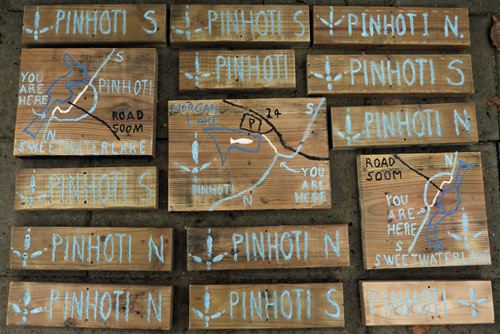
Pinhoti 2x4 Signs
John and I carved these Pinhoti Signs from old lumber from various piles around John and Sale's place in Leeds, Alabama. We used a Dremel with a carbide ball from the hardware store. The fill paint is from the little glass bottles for models from a hobby store. It is a thin, mineral spirit paint which soaks into and stains the wood. We applied it with cotton Qtips.
Thursday, October 17, 2013
|
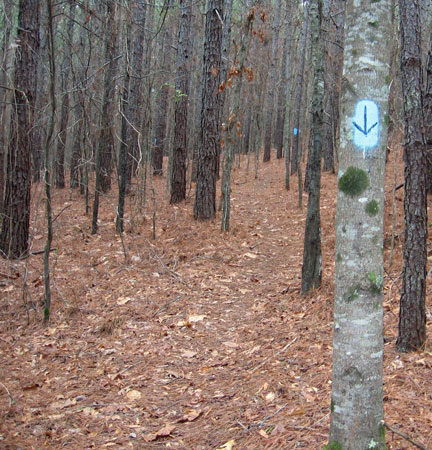
Poorly shaped Blue AT Style Blaze with superimposed Pinhoti Turkey Foot.
Three more rectangle blazes, in a different shade of blue paint are visible down the trail.
January 2013
|
Pinhoti Trail Blazing
Originally, the Pinhoti Trail was blazed with white painted Turkey Footprint Blazes. Most footprint blazes were just three quick dabs with a paintbrush, and painting or repainting went quickly. Occasionally, it was neat to see where someone had painted each lobe and claw of the toes, but this effort only went into a few special signs. The Turkey Foot Blaze was only on the Pinhoti Trail, so if you saw it, there was no confusion as to which trail you were on.
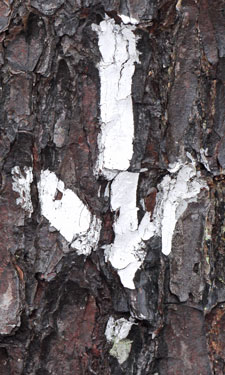
Pinhoti Trail Turkey Foot Paint Blaze, 2011
There were also Aluminum Diamond Blazes in Alabama and Plastic Diamond Blazes in Georgia.
A committee of people who evidently don't work much on the Pinhoti, don't hike much, and don't understand the Appalachian Trail Blazing System, decided that the entire Pinhoti Trail should be reblazed with blue dollar bill sized paint blazes. This destroyed the unique and easily painted Turkey Foot Blazing, and replaced it with rectangular blazes that don't tell you which trail you are on.
It's more difficult than you might think to paint tidy rectangles on tree bark. Grooves in the bark require that you scrub the brush in to paint within the groove, and this scrubbing in ofen spreads paint beyond the proper rectangle. Using a 2 inch bruch to paint a two inch line on an irregular surface is actually quite a difficult feat. Amateurs often paint sloppy blobs much larger than the intended rectangle. Big irregular blobs are ugly and not what hikers escape to the woods to see.
Rectangular Blazes require much more maintenance than Turkey Foot Blazes. As trees grow, the bark expands circumferentially. Originally tall skinny blazes become wider and wider. The sides must be skinned off with some type of blade to retain the dollar bill blaze size and shape. On a pine tree, the bark skinned off is dead, but on many other species of trees, the maintainer must skin into living tissue to remove the excess paint.
The Pinhoti National Recreation Trail is also incorrectly marked per the Appalachian Trail Blazing System, which specifies that trails which connect directly with the AT be rectangle blazed in blue paint, and trails which further connect to the side trail be blazed in white. Per the Appalachian Trail Blazing System, The Benton MacKaye Trail is properly blazed in blue as a side trail, whereas the Pinhoti would be properly blazed in white as a side-side trail.
But the Appalachian Trail Blazing System was never intended to replace all other blazing systems. So long as a trail connecting to the AT is marked so a reasonably careful hiker won't confuse it with the AT, there is no requirement that it be reblazed per the AT standard. Paint circles and triangles, and plastic and metal blazes, are all common blazes on trails which connect directly to the Appalachian Trail.
Thanks, Lounge Chair Committee, for ruining a great blazing system on the Pinhoti Trail.
Dan
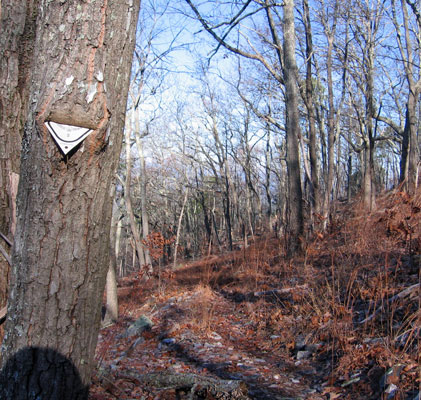
Aluminum Pinhoti Diamond Blaze Half Covered by Pine Bark
December 2010

Eastern Newt
Notophthalmus viridescens
Red Eft (juvenile, land-dwelling stage)
June 2017

Big Leaf Magnolia
Magnolia macrophylla
Friday, May 13, 2016
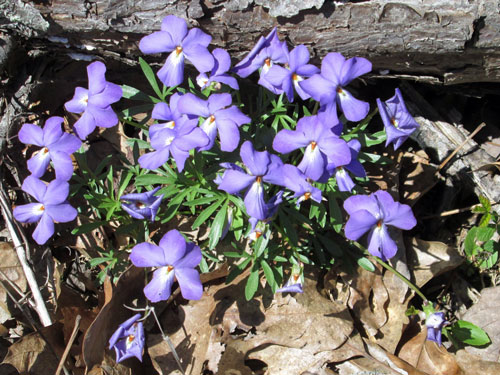
Birds Foot Violet
Viola pedata
Saturday, April 9, 2016
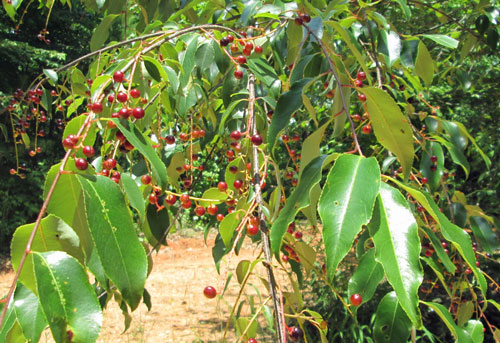
Black Cherries
Prunus serotina
Wednesday, June 1, 2016
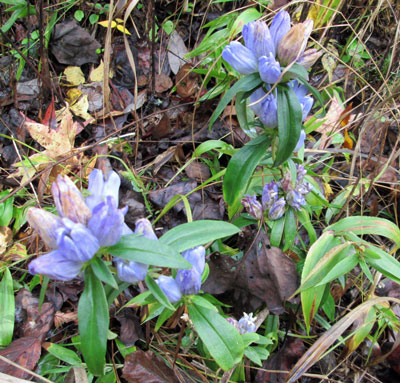
Blue Gentian
Gentianopsis crinita
Wednesday, October 28, 2015
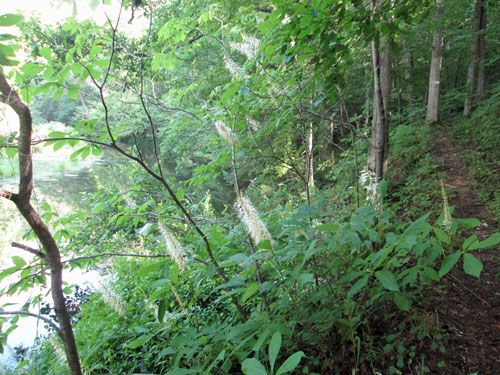
Buckeye
Sunday, July 24, 2016
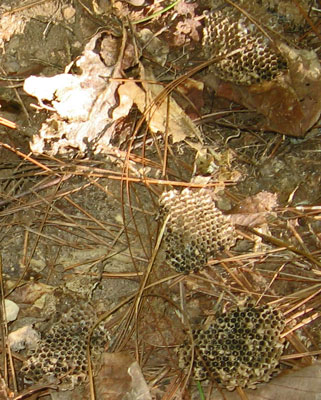
Paper Wasp Nest
Vespidae
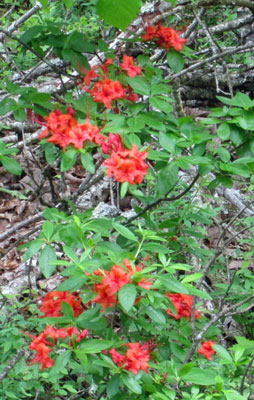
Flame Azalea
Rhododendron calendulaceum
Tuesday, May 10, 2016

Flox Phlox
Saturday, April 15, 2017
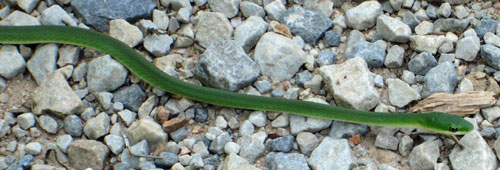
Green Snake
Thursday, June 23, 2016
In the eastern US, Rough Green Snakes Opheodrys aestivus and Smooth Green Snakes Opheodrys vernalis are fairly common and harmless. From a distance, they look about the same. But on a rough snake, each scale has a ridge, a keel, down the middle parallel to the length of the body. The keels are visible up close, and from a distance, you may be able to distinguish between the sheen of smooth scales versus keeled scales after you have seen a lot of snakes. Other types of snakes have smooth and rough species.
|

Hepatica Hepatica
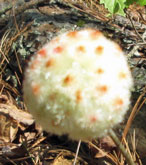
Insect Gall
Friday, April 14, 2017

Dwarf Crested Iris
Iris cristata
Saturday, April 9, 2016
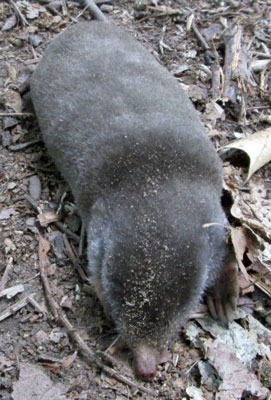
Mole
Talpidae
Monday, June 6, 2016
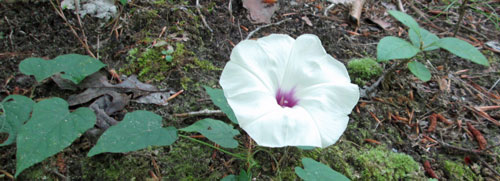
Morning Glory
Convolvulaceae
Wednesday, July 13, 2016
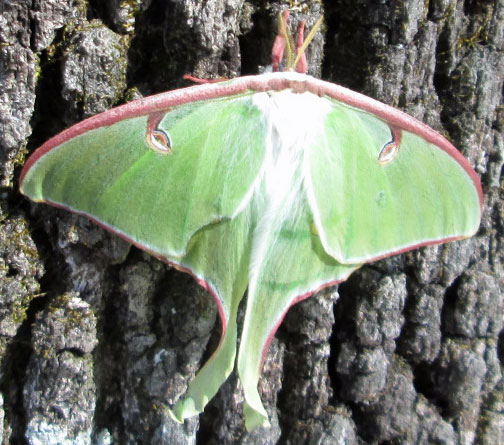
Male Luna Moth
Actias luna
Monday, March 21, 2016
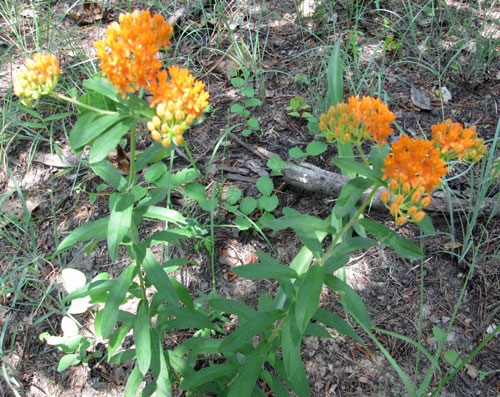
Orange Butterfly Weed
Asclepias tuberosa
Friday, May 27, 2016

PawPaw Fruits
Asimina
Sunday, July 17, 2016
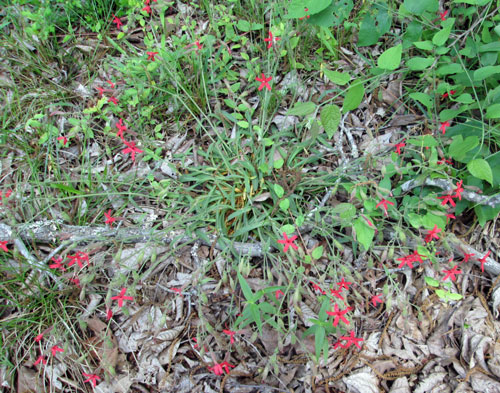
Red Flowers
Tuesday, May 3, 2016

Rhododendron Minor, John
Rhododendron
Thursday, November 12, 2015
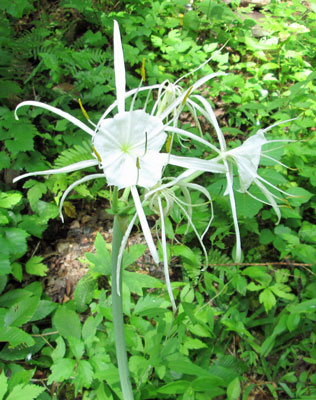
Spider Lily
Amaryllidaceae
Sunday, July 24, 2016

Thistle

Eastern Box Turtle
Terrapene carolina carolina
Thursday, June 23, 2016
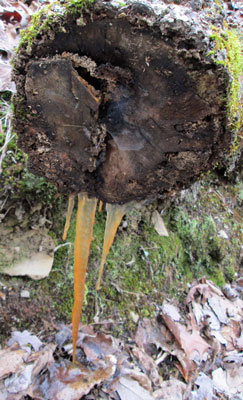
Tree Sicle
Monday, February 15, 2016
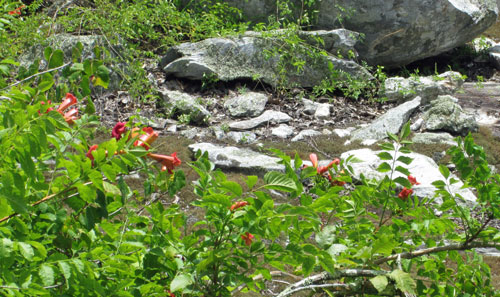
Trumpet Vine
Campsis
Saturday, July 30, 2016
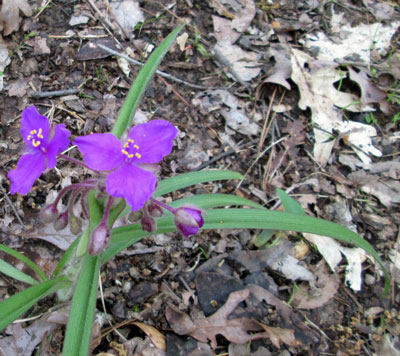
Wort
Thursday, April 14, 2016
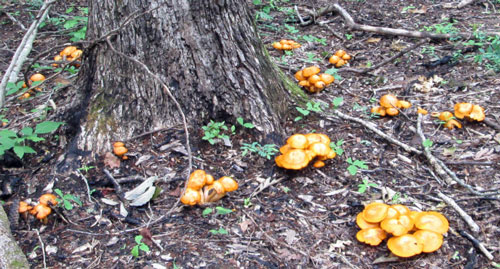
Yellow Mushrooms
Saturday, May 21, 2016
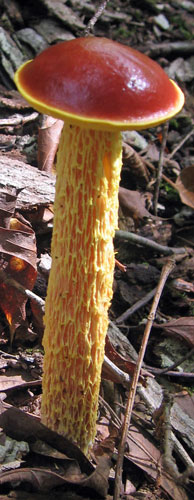
Skinny Brown Mushroom
Shaggy-stalked Bolete
Boletellus betula
Friday, August 24, 2012

Fungus
December 2010
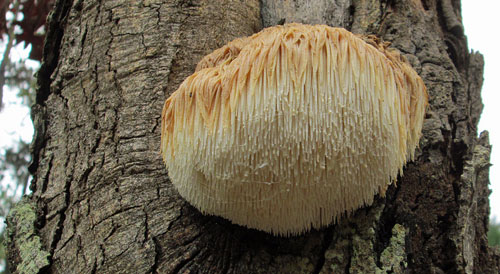
Bearded Tooth Fungus
Hericium erinaceus
Sunday, November 8, 2015

Big Mushroom - Polypore
Friday, September 2, 2016
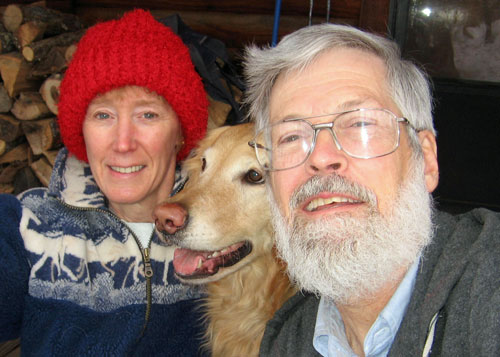
Sale, Daisy, & John at home in Leeds, Alabama
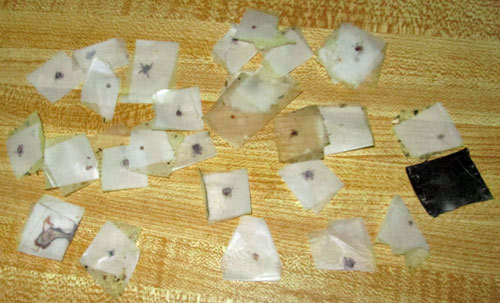
More Evidence that John is an Outdoors Guy
Ticks removed from John. They will be burned in the wood stove after no illnesses or rashes have shown up and enough visitors have been impressed. It doesn't take long to collect this many. All were well attached and there were over 50 in 2017.
June 2017
|
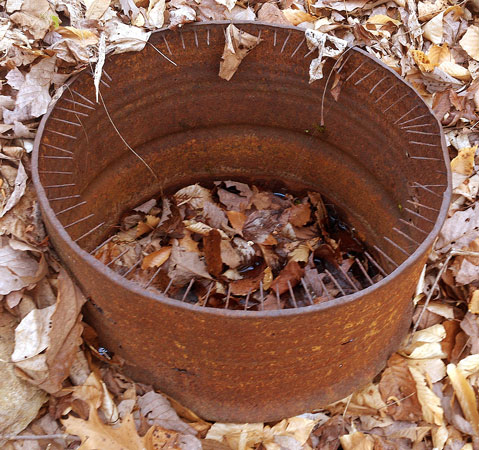
Still, 2017
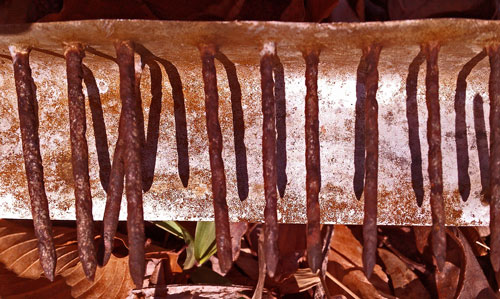
Still, 2017
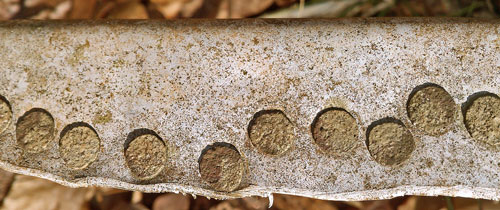
Still, 2017
It's fairly common to find old moonshine still sites along the Pinhoti Trail.







































